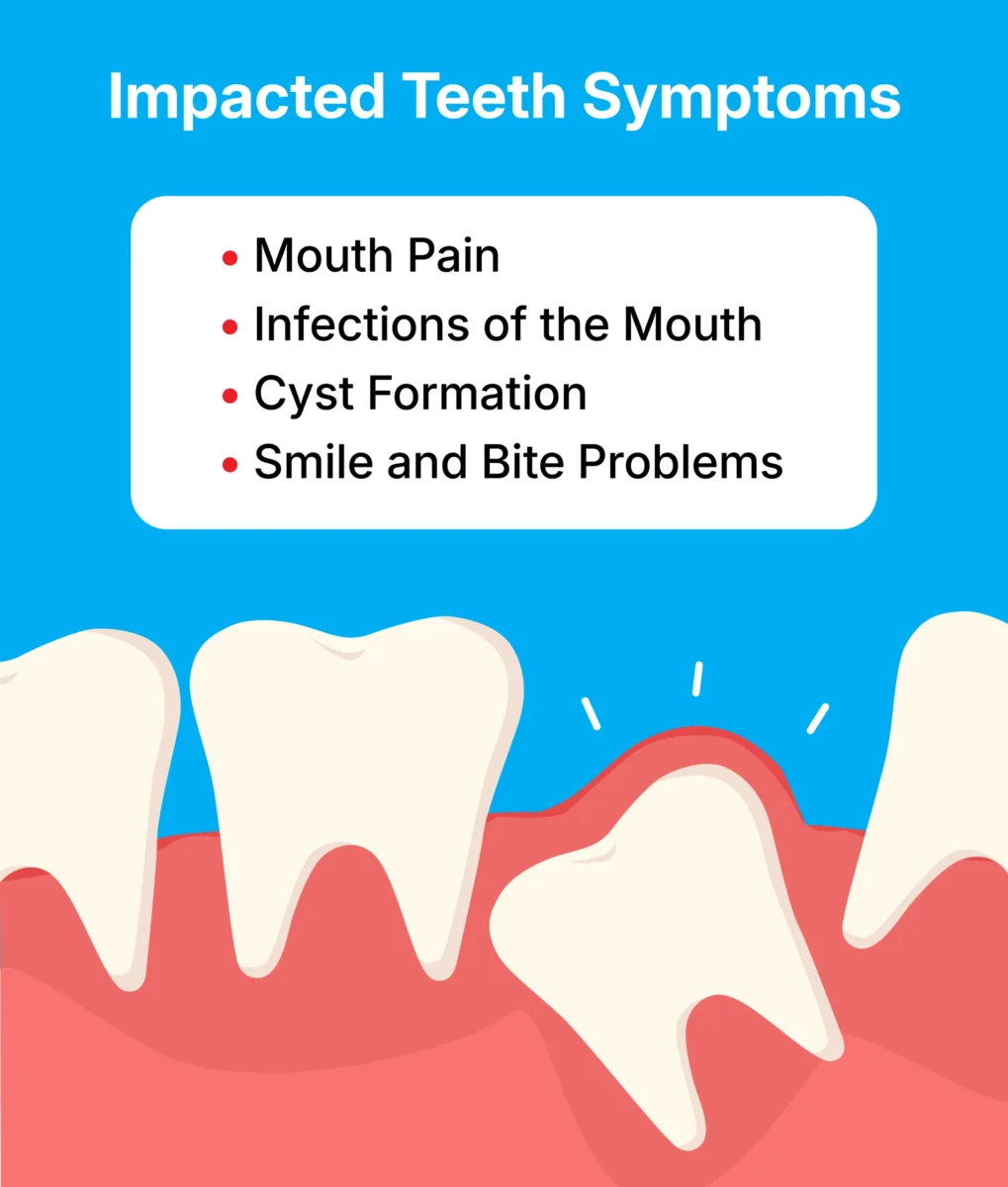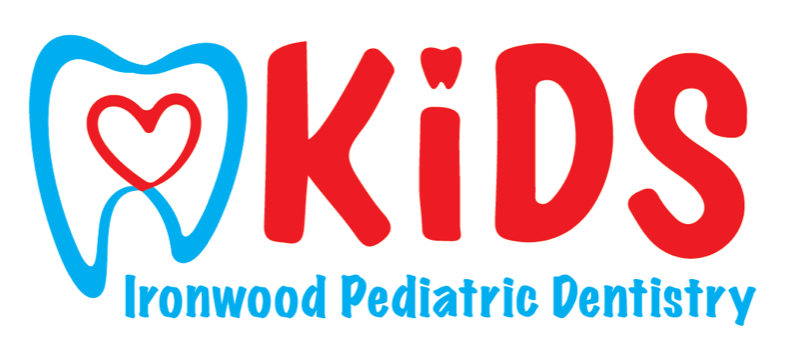Most of the time, when your child’s baby teeth fall out, the permanent teeth will erupt on their own to replace them. Sometimes, however, problems occur that keep one or more permanent teeth from erupting through the gum tissue. The result is what dentists and orthodontists call impacted teeth.
Impacted wisdom teeth are the most common kind of tooth impaction. Other teeth that can be subject to impaction problems include the maxillary canines (eyeteeth), lateral incisors, and premolars. Upper teeth are more likely to have impaction problems than lower teeth.
Braces are an orthodontic treatment method that can effectively treat tooth impaction. In this article, we cover the causes, symptoms, and kinds of impacted teeth and how braces treatment can help correct an impacted tooth condition.
If your child has impacted teeth and you are considering braces, please call Ironwood Pediatric Dentistry at (480) 422-4544 or use our contact form.
How Braces Can Treat Impacted Teeth
For some impacted teeth, extraction is often the best treatment method. This is particularly true of impacted wisdom teeth or if the impaction is associated with damage to the tooth or an infection.
In less serious cases, though, orthodontic treatment short of extraction is practical, especially if the tooth is still healthy and there is enough room in your child’s mouth to allow for the tooth to erupt into proper alignment.
Braces work by applying constant pressure to the teeth, gradually moving them into their correct positions. They can reposition an impacted tooth so it can work properly for biting and eating, and are particularly helpful in correcting canine tooth impactions.
Braces are often an effective treatment option to:
- Move an unerupted or partially erupted tooth into place; or
- Prevent teeth from becoming impacted in the first place.
Treatment time for braces to correct an impaction problem usually takes about one year to complete.
In some cases, braces may be combined with oral surgery to remove gum tissue around the impacted tooth so a bracket and chain can be placed on it, a procedure called exposure and bonding.
Your child’s orthodontist will eventually replace the chain with an elastic band to gradually pull the impacted tooth into its proper position.
What Causes Impacted Teeth?
The most common cause of impacted teeth is tooth overcrowding, which can cause the permanent teeth to overlap and develop unevenly.
Other reasons why a tooth may become impacted include:
- Genetic causes, like a smaller-than-usual mouth size
- Oversized teeth
- Traumatic injury to the mouth
- Poor oral health, such as plaque buildup
- Effects of dental procedures, like tooth extractions
Impacted Teeth Symptoms
Impacted teeth are generally not something you can detect on your own. They are usually found by your child’s dentist through the use of X-rays.
Some symptoms can be connected with an impacted tooth, but these symptoms are not exclusive to impacted teeth. Usually, the presence of these symptoms will make your child uncomfortable enough to let the dentist know about them, and that is how the dentist detects a tooth impaction.

Mouth Pain
Impacted teeth can put pressure on nerve endings in the gums, leading to swollen gums and associated pain, including headaches.
Infections of the Mouth
An oral infection condition, like gum disease, can accompany a tooth impaction when plaque and tartar buildup are present.
Cyst Formation
Gum irritation around an impacted tooth can lead to cysts, which are fluid-filled sacs. Cysts, in turn, can cause harm to the nearby teeth and jawbone structure, causing pain.
Smile and Bite Problems
Often impacted teeth affect the positioning and function of surrounding teeth, which can lead to a crooked smile and trouble biting and chewing.
Types of Tooth Impactions
Your child can experience an impacted tooth in any of the following ways:
Horizontal Impactions
A horizontal impaction occurs when a tooth grows underneath the gums in a sideways position. As you may imagine, this can be an extremely painful condition because the horizontally growing tooth pushes into one or more adjacent teeth.
Horizontal impactions prevent teeth from erupting naturally and often require the extraction of the affected teeth.
Vertical Impactions
A vertical impaction does not always result in a tooth being unable to erupt. The problem is that the affected tooth is positioned too close to one of the surrounding teeth. Vertical impactions are well-suited for treatment by orthodontics, including braces.
Angular Impactions
An angular impaction occurs when a tooth grows at an angle between a horizontal and a vertical impaction.
In an angular impaction, only part of the tooth may erupt while another part becomes stuck against an adjacent tooth.
There are three kinds of angular impactions:
- Distal impactions happen when the affected tooth is angled toward the back of the mouth and cannot erupt.
- Partial impactions are also known as mesial impactions. In this case, the affected tooth is angled toward the front of the mouth.
- Buccal impactions involve teeth that are oriented toward the cheeks.
Soft and Hard Tissue Impactions
These impactions take their names from the kind of tissue that is keeping the affected tooth from properly erupting:
- Soft tissue impactions happen when the tooth breaks through the gum tissue, but is blocked by soft tissue.
- Hard tissue impactions happen when the tooth makes it through the gum tissue but is blocked by bone.
Do You Have Questions About Impacted Teeth?
At Ironwood Pediatric Dentistry, our pediatric dentists and orthodontists are highly experienced in diagnosing and treating all kinds of childhood dental issues, including tooth impaction problems in children. Remember, chances are that you will not be able to identify tooth impactions on your own, but we can.
If left untreated, impacted teeth can lead to other significant dental issues. Orthodontic treatment, including braces, is effective in most cases, especially in children, in correcting adult tooth impactions.
The earlier we can find an unerupted or partially impacted tooth issue, the sooner we can create a treatment plan to help it erupt properly and avoid creating problems with neighboring teeth.
If your child is experiencing jaw pain, it could be a symptom of impacted teeth. Call our Phoenix dentist’s office at (480) 422-4544 or use our contact form to get in touch with one of our pediatric dentists and schedule an appointment.
